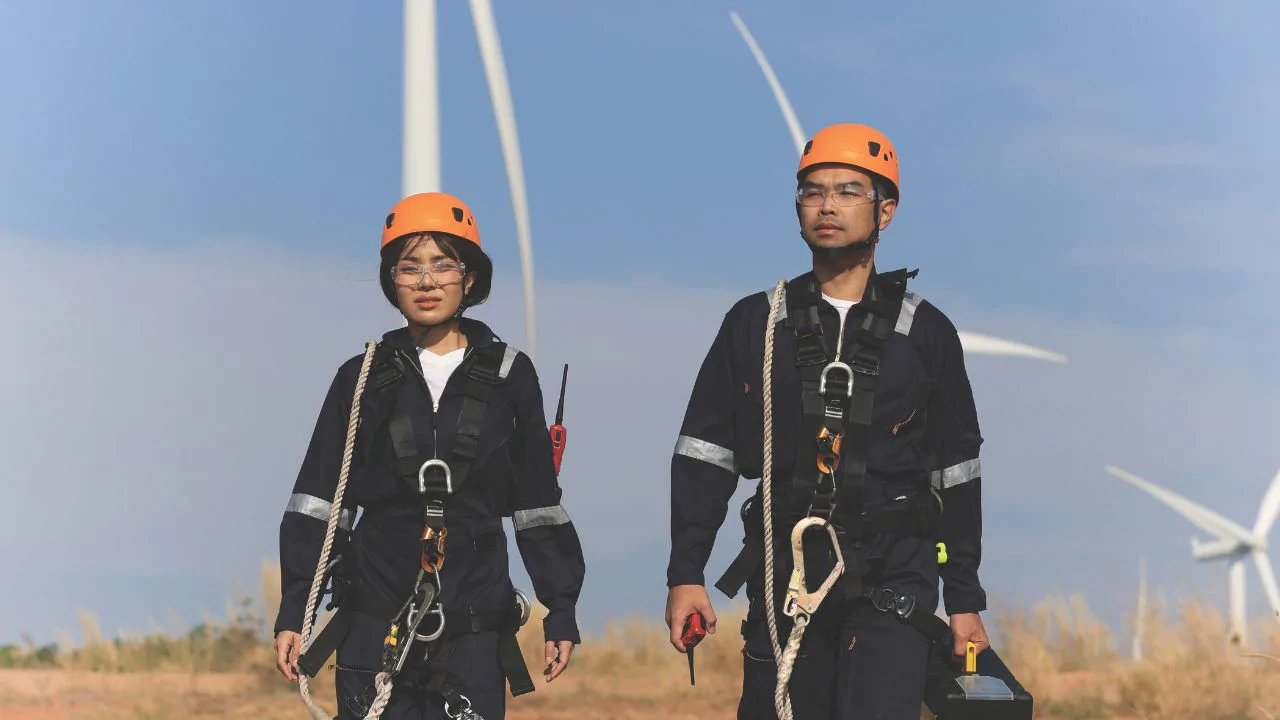From Blueprint to Reality – A Day in the Life of a Fabrication Engineer
19 May, 20256:46The life of a fabrication engineer in the Asia-Pacific region is fast-paced, unpredictable a...

The life of a fabrication engineer in the Asia-Pacific region is fast-paced, unpredictable and very rewarding. Whether you're resolving day-to-day engineering problems, navigating complex supply chains or adapting to local work cultures, there’s always a new challenge just around the corner.
But having a career in the region takes more than just technical skill – finding the right opportunity can make all the difference. At NES Fircroft, we specialise in connecting skilled fabrication engineers with top-tier employers across Asia-Pacific.
This blog describes a typical day in the life of a fabrication engineer in the Asia-Pacific region and explains how we can help you to land your dream job there.
Preparation and planning
On arrival at the fabrication yard, a mandatory safety briefing is conducted. These sessions are critical to maintaining operational safety standards, particularly given the physically demanding and potentially hazardous nature of fabrication work.
While regulations differ across the Asia-Pacific region, leading companies enforce rigorous health and safety standards. Personal protective equipment (PPE), including hard hats, steel-toe boots and fall protection harnesses for working at height, is typically required. Emphasis is placed on preventing complacency, as safety incidents often result from procedural shortcuts.
During this phase, engineers also review the daily planning schedule and examine the associated fabrication drawings. These might relate to projects such as pressure vessels for oil and gas applications in Malaysia, or structural components for high-rise developments in cities like Hong Kong. Any discrepancies or inconsistencies in the drawings must be identified and addressed promptly to avoid downstream delays.
At this stage, co-ordination with the yard foreman is essential to confirm the status of ongoing work, including material cutting, welding readiness and impending inspections.
Hands-on problem solving
The fabrication yard presents a demanding work environment, with loud noise produced from grinders, overhead cranes and MIG welders. Due to the complex nature of the work, and like any other heavy engineering, production problems are a regular occurrence. For example, a warped beam might be identified, which is possibly a result of the steel cooling unevenly after welding.
To resolve these issues, engineering knowledge is vital and therefore it is one of the top 5 skills for a fabrication yard engineer in Asia.
The best fabrication yards encourage problem-solving at all levels – a hierarchy exists, but the best ideas don’t always come from the top. When confronted with structural difficulties or unforeseen material behaviour—both frequent issues in the fabrication industry—all engineers are required to be able to think on their feet and come up with realistic solutions. The difference between expensive delays and successful project completion can come down to the capacity to solve problems promptly.
Supply chain delays are also frequently problematic. As a result, fabrication engineers in this region manage logistics constantly – for example, customs hold-ups can disrupt projects and last-minute design changes from clients often affect the schedule.
Quality checks and client updates
At a fabrication yard, there is much focus on quality control. This might include a third-party inspector coming to check the weld integrity on a pipe spool. Non-destructive testing (NDT) – ultrasonic, radiographic, dye penetrant or other types – determines whether a seam holds. If there’s a defect, then the spool will need to be returned to the welders.
Sending regular updates to the client is also important. In the Asia-Pacific region, communication styles vary – for example, it is often quite direct in Australia but more nuanced in Thailand or Indonesia.
Fabrication engineers must possess strong interpersonal and collaborative skills to perform these check-ins effectively with coworkers and stakeholders.
Local challenges
Working in the Asia-Pacific region comes with its own unique set of challenges. In addition to the logistical supply chain issues already mentioned above, extreme weather events – such as monsoons, cyclones and floods – can also delay shipments.
And related to this, another – perhaps unexpected – challenge for some expat fabrication engineers in the region is adapting to the often physically demanding work in the climate. Depending on your location, it can range from cold and snowy, to very hot and humid. This means that fabrication engineers need to quickly acclimatise to the local conditions in order to work safely and comfortably.
The language barrier can also be an issue for some fabrication engineers. While many of the locals can speak English to varying standards, there are plenty who don’t. In the Asia-Pacific region, a vast array of different languages and dialects are used, most of which aren’t always easy for Westerners to pick up, unlike European languages, which may bear more of a resemblance to each other.
Along with other local aspects – such as the types of food and drink that are (or are not) available – and as with any major relocation, there are several cultural challenges for fabrication engineers moving to the region. However, it’s worth noting that plenty of engineers are able to successfully navigate these issues and lead a happy life there.
Wrapping up and looking ahead
Typically, in high-volume yards, a night shift team will take over when things are busy. However, before leaving the site, there is usually documentation to complete: updating drawings, logging hours, flagging potential delays for the next day’s planning meeting and more.
If this sounds appealing, let us help you find a role
Fabrication engineering in the Asia-Pacific region isn’t just about technical skills. It’s also about problem-solving and communication skills – working with diverse teams, navigating supply chain quirks and resolving an almost never-ending list of issues. The fabrication yards are loud and the deadlines tight, but the work is real: hands-on, tangible, shaping the infrastructure of a rapidly growing part of the world.
NES Fircroft can help professionals to find fabrication engineering jobs. We provide orientation and assignment support, ensuring that contractors integrate smoothly into their new roles.
So, if you’re looking for a new fabrication engineer role in the Asia-Pacific region, check out our job search page for the latest vacancies, or visit our candidate portal to register and apply.











